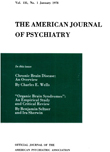ELECTROENCEPHALOGRAPHIC STUDIES IMMEDIATELY FOLLOWING HEAD INJURY
Abstract
1. If mild cerebral trauma such as we were investigating produced changes in the electroencephalographic tracing the abnormality disappeared within a period of minutes in the vast majority of cases.
2. Patients who gave a history of amnesia following cerebral trauma, but were clear mentally at the time the EEG was taken, showed only a slight increase in the percentage of abnormal records as compared to the control series. This was true even when the records were taken within a few hours of the accident.
3. If there was an impairment of consciousness of any degree at the time the EEG was taken, abnormality in the EEG was the rule.
4. Electroencephalographic records taken within 30 minutes after patients sustained head injury showed a greater percentage of abnormality than those taken after 30 minutes had elapsed. The rapid disappearance of abnormal electroencephalographic findings points, in our opinion, to some mechanism in concussion other than petechial hemorrhage, cerebral contusion, embolic phenomenon, or any other histopathological change which must of necessity require several days to disappear.
5. In the patients with abnormal electroencephalographic records the average velocity of the striking object or of the falling head at the time of impact was greater than the velocity necessary to produce concussion in experimental animals as determined by others. The average velocity of the striking object or falling head in patients who showed normal or borderline electroencephalographic records was less than the velocity necessary to produce concussion in experimental animals.
6. The study of the electroencephalographic records taken immediately following mild head injury was less reliable than clinical judgment in predicting time loss from work. An ultimate opinion of the value of EEGs in this respect will depend upon a study of a group of more severely injured patients.
Access content
To read the fulltext, please use one of the options below to sign in or purchase access.- Personal login
- Institutional Login
- Sign in via OpenAthens
- Register for access
-
Please login/register if you wish to pair your device and check access availability.
Not a subscriber?
PsychiatryOnline subscription options offer access to the DSM-5 library, books, journals, CME, and patient resources. This all-in-one virtual library provides psychiatrists and mental health professionals with key resources for diagnosis, treatment, research, and professional development.
Need more help? PsychiatryOnline Customer Service may be reached by emailing [email protected] or by calling 800-368-5777 (in the U.S.) or 703-907-7322 (outside the U.S.).



